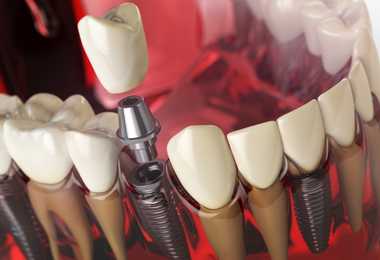
Dental Veneer
September 22, 2023
Dental Implant
High achievements in the field of technology also show their effects in the field of modern medicine and make important contributions to dental treatments in terms of health and aesthetics. Dental implants are the result of these achievements. The dental implant is a medical device that is used to give an aesthetic appearance to one or more missing teeth in the mouth. A dental implant is a titanium or zirconium screw intended to support a removable or permanent dental prosthesis. Implants have the same function as real teeth. Unlike traditional methods such as bridges that damage other teeth, implantology is a healthy, aesthetic, modern, technological and advantageous method that is applied without damaging neighboring teeth.
Why Choose Dental Implant?
The advantages of implants can be considered from two angles: aesthetic and medical.
Dental Implant & Health
The implants are made of materials that do not pose any health risks, do not pose an allergic risk and do not contain toxic substances. This application prevents the deterioration of the bone structure of the jaw and protects the structure of the other teeth. The implant being the closest application to natural teeth is the healthiest and most definitive solution to tooth loss problems.
Dental & Aesthetics Implant
Dental implants are artificial roots placed in the jaw and intended to replace missing teeth. After the loss of a tooth, the bone around the tooth root melts, which leads to a deterioration in the aesthetic appearance. Around the mouth wrinkles begin to appear, the cheeks sag and the jaw structure deteriorates. The tip of the nose and chin are approaching. The aesthetic appearance of the mouth and pronunciation begins to deteriorate. In order to prevent this aesthetic deterioration, implants must be placed to replace the roots of the missing teeth. In this way, the bone merges with the implant like a real tooth and no aesthetic deterioration or speech impairment occurs.
Dental Implant Treatment & Healing Process
Before the implant treatment, a detailed examination and the necessary tests of the patient are carried out, also images are obtained by three-dimensional scanning methods. An individual dental treatment plan is prepared for each patient.

Image-1: Healthy teeth and dental implant
Depending on the patient's condition, the operation is performed under local anesthesia, sedation or general anesthesia. The duration of the operation varies depending on the number of implants, on average each implant is placed in about ten minutes. The healing process varies between 3 and 6 months for the implant to integrate with the bone. During this period, a temporary prosthesis is placed in order for the patient to be able to use the implant. Once the healing has been performed, a permanent implant is installed.
The duration of dental implantation varies depending on the number of teeth. However, thanks to advanced technologies, implants are installed in a short time.
After the implant treatment, care must be taken to ensure the proper union of the implant and the bone during the recovery period of 3 to 6 months. Oral health must be taken into consideration not only during this period, but a lot of attention must be constantly paid to dental care. If the implants are carefully cared for, they can serve for a lifetime.
Types of Implants
Depending on the type of structure, implants are divided into two types: the zirconium implant and the titanium implant.
Zirconium Implant
The zirconium implant is made of a natural material. This one is extremely durable and very resistant. Preference is given to zirconium implants because they are more aesthetic and more similar to natural teeth and reflect light. These implants are made of natural materials and do not contain metallic materials. They do not leave a metallic taste in the mouth, do not corrode, do not change color and are not harmful to health. It is more resistant to pressure than titanium implants. This type of implants is recommended for people with a narrow jaw structure. It is also recommended for patients sensitive to metals. In addition, it is easily accepted by the jaw bone and respects the tissues.
Titanium Implant
Titanium implant is a preferred type of implant because it is durable, integrates with the bone and respects the tissues. Its prices are cheaper than zirconium implants.
Implant Prices
The prices of implants are determined according to the number of teeth, the quality, the type and the cost of the materials to be used. When choosing implants, preference should be given to experienced brands with a long history and high investments in R&D.